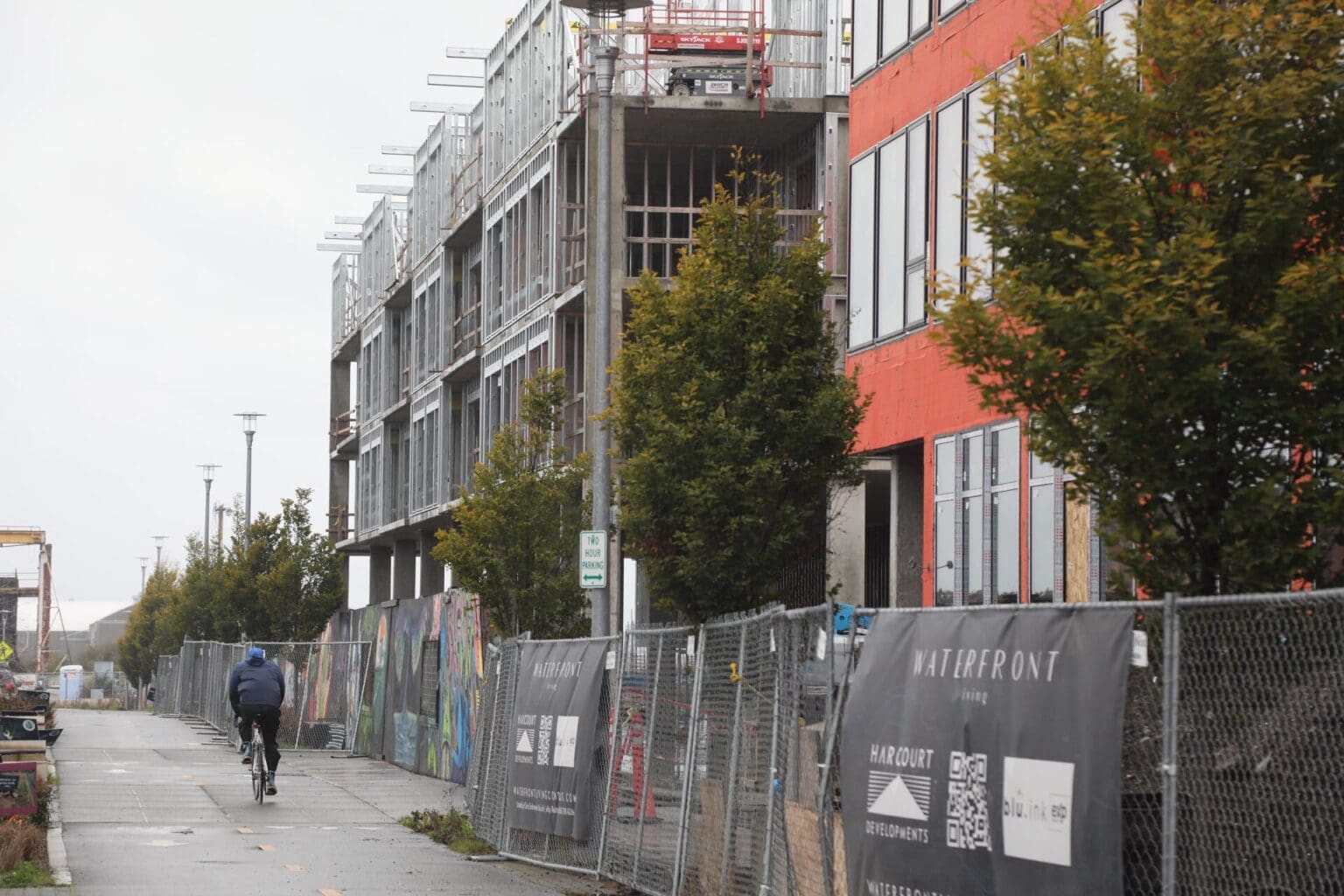This doesn’t happen all that often, but my eyes lit up earlier this year when Hailey Hoffman, CDN’s lead visual journalist, popped into my office with a proposal: What if we did a photo-driven series of essays, she asked, about daily lives of workers, and the work they do, on Bellingham’s central waterfront?
Of the 1.5 million questions that have come across my transom as editor of CDN, this was one of the biggest lobs.
First: “Sold.”
Followed by: “When can I have this?”
For starters, this work by a key founding staff member at CDN is in Hoffman’s journalistic wheelhouse: Telling stories through lenses rather than a keyboard, producing visually evocative reports that cling better to audience souls than words.
We discussed scope, shape, thrust, timing, all the usual behind-the-curtain journalism stuff, much of which later changed. We didn’t really expect the project to be more than six months in the making, but that’s the biz, and other news intruded. So here we are — with a budding Special Report that has grown in both scope, methodology — and, I believe, news value.
The first piece of what will be a three-part, monthly Special Report, “Working Waterfront” debuts today on page one of our print edition, and online at cascadiadaily.com. It sets the stage for the rest of the series by discussing the central role a “working waterfront” has always played in the history of Bellingham and Northwest Washington — and the key role it is likely to play in the future.
Critical to that, we believe, is a baseline understanding of Bellingham Bay’s industrial past, which is explained in substantial detail in our reporting.
Most of this will not be breaking news to old-timers, but fact is, we’re outnumbered. CDN hopes a grounding in history of our waterfront’s past won’t be just a pleasant memory-lane stroll for history buffs like me, but a useful point of entry to many newcomers interested in shaping its future.
It will be followed in January by a series of rich photo essays of local boat operators, fishermen, boatbuilders and other waterfront workers who comprise a largely unseen connective tissue in the local economy. It will conclude with a February report on political and economic forces likely to shape the waterfront’s future.
The timing of the series is serendipitous. Our original concept of presenting the pieces as a way to understand the past, appreciate the present, and explore the future of a “working waterfront” was more conceptual than breaking-news oriented.
But news finds its own way to stomp on the accelerator. Since then, the blossoming controversy over ABC Recycling’s growing scrap-metal recycling project on local shorelines has moved to front and center the questions about what local residents have specifically in mind when they say they support a “working waterfront.”
Bring it on, I say. That argument has been stymied — either through economic happenstance or managerial negligence, depending on one’s view of the central government agency here, the Port of Bellingham — for too long, anyway.
As most longer-in-tooth locals know, the city has undergone multiple bouts of planning for its waterfront future in the 16 years since Georgia-Pacific stopped cranking out two-ply.
Most of those plans sadly now sit collecting dust, with the waterfront’s present defined by a three-member port commission, some hit/miss cooperation with the City of Bellingham, and, unfortunately, development agreements, now unwinding, between the Port of Bellingham and Harcourt, an Irish development firm.
Good? Probably. Harcourt’s ignominious settling into the muck of Bellingham Bay (fitting, perhaps, in light of its plans to turn part of the G-P land into a hotel with a Titanic theme) at least slightly cracks open the door anew for public kvetching over what happens now on our waterfront.
It’s worth remembering that a central tenet of all that prior planning was rare consensus — the notion that this seaside port city, born of a working waterfront, should remain one, albeit with cleaner, greener work that serves as less of a stain on the stunning natural environment that draws and keeps most of us here.
That’s the easy part; more fraught is deciding what “working waterfront” even means to the expanding political base of a growing city. As the series will ask: What sort of work, and for what workers? Is today’s notion of a “working waterfront” in modern minds anywhere near what it was a century ago? Is there consensus? Or is that a neighborhood-by-neighborhood reality, defined by proximity to noise, sightlines and perhaps unrealistic expectations?
Our hope is that the Working Waterfront series will at least partially set the stage for that public discussion, much in the way that last year’s “Beyond Bars” special report set a baseline for consideration of a new Whatcom County Jail and associated justice programs.
With future Working Waterfront pieces being largely visual, it’s an experiment for us. But we hope it will be appealing both to casual readers who enjoy candid visual representations of present-day waterfront workers, and the more wonk-inclined who might be inspired to engage in future public planning and input.
Another coming attraction: “Our Boys in the Boat”
To close, a note about another special report likely to have broad appeal: Christmas week marks the debut of the George Clooney-directed mega picture “The Boys in the Boat,” based on Daniel James Brown’s bestselling account of the 1936 Olympic triumph of University of Washington men’s crew team.
CDN is putting final touches on a deeply reported series of stories about two members of that crew with long Northwest Washington roots whose individual stories received only scant attention in the book, as well as the legacy their triumph has left on the sport locally. Look for the first piece online and in print on Friday, Dec. 15.
Ron Judd’s column appears on Fridays; ronjudd@cascadiadaily.com; @roncjudd.





Party chair: We must hold all leaders — including Democrats — accountable